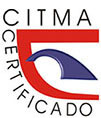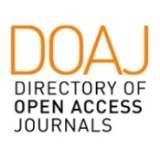Our heart fills with pride: expression of emotions in José Martí's oratory
Keywords:
image, enunciation, sentence, enunciator, emotive dimensionAbstract
ABSTRACT: Introduction: This research responds to the necessity to delve into the ways used by José Martí to convince his audience powerfully, at a crucial moment in our history. Based on the criterion that in enunciation, discursive images are constructed, attempts are made to determine the form and function of the idiomatic signs that construct the image of the enunciator in the emotive dimension. Methods: To this end, a methodology has been developed with a pragmatic approach, which reconciles essential issues of discourse analysis, semantics and enunciation theory. Results: Four fundamental ways of constructing the image of the enunciator are identified, as well as the presence of varied grammatical resources through which the overflow is manifested in Martí's oratory. The results reveal how the speaker relies on the semantic-pragmatic properties of the structures identified as a resource for persuasion. Conclusions: The structures that construct the image of the enunciator in the emotive dimension have a metacommunicative, self-referential, pragmatic function, which is aimed at guaranteeing the adequate conditions of communication.
Downloads
References
ÁLVAREZ, L. E. (1995). Estrofa, imagen, fundación: la oratoria de José Martí. Ciudad de La Habana: Casa de las Américas.
ÁLVAREZ, L. E. (2007). Hablar y persuadir: el arte de la oratoria. Ciudad de La Habana: Editorial José Martí.
BENVENISTE, É. (1999). Problemas de lingüística general. (15ª ed. Vol. 2). México: Siglo XXI Editores.
CHARAUDEAU, P. (1998). Las grandes problemáticas del análisis del discurso. Estudios de Lingüística Aplicada, (27).
CHEONG, L. (2015). La teoría de la cortesía verbal y el concepto de imagen en la interpretación de textos argumentativos. Santiago (134), 319–329. Recuperado a partir de https://santiago.uo.edu.cu/index.php/stgo/article/view
ESCANDELL, M.V. (2008). Introducción a la Pragmática. (2ª ed.), Barcelona: Ariel.
FUENTES, C. (2004): Enunciación, aserción y modalidad, tres clásicos. Anuario de Estudios Filológicos. Vol. XXVII.
GALBÁN, A. M. (2003). Aproximación al estudio de las macrocategorías semánticas modales (valoración, lealtad, certidumbre, interés, afectividad y expresividad) y su expresión a través de verbos de las lenguas española y alemana. (Tesis doctoral inédita). Universidad de La Habana.
LARRAÍN, A. Y L. MEDINA (2007). Análisis de la enunciación: distinciones operativas para un análisis dialógico del discurso. Estudios de Psicología: 28 (3).
MARTÍNEZ, M. C. (2000). Visión discursiva del lenguaje, visión dialógica del discurso. La argumentación en la enunciación. http://www.geocities.ws/estudiscurso/martinez2.html
MARTÍNEZ, M. C. (2007). La orientación social de la argumentación en el discurso: una propuesta integrativa. http://www.academia.edu/29469782
MASSI, M. (2001). La emoción y su realización discursiva. Revista Electrónica Discurso, (1).
REAL ACADEMIA ESPAÑOLA. (2001). Diccionario de la lengua española (22. ? ed.). Consultado en http://www.rae.es/rae.html
TORDESILLAS, M. (1998). Esbozo de una dinámica de la lengua en el marco de una semántica argumentativa. Signo y Seña (9).
TORDESILLAS, M. (2006). La enunciación: fundamentos de lenguaje, principios de lengua, perspectiva docente. 4to Congreso Brasileiro de Hispanistas. Estudos de Linguagens. Volume II. Rio de Janeiro. Brasil
Downloads
Published
How to Cite
Issue
Section
License
Copyright (c) 2022 https://creativecommons.org/licenses/by-nc/4.0/

This work is licensed under a Creative Commons Attribution-NonCommercial 4.0 International License.
Usted es libre de:
Compartir — copiar y redistribuir el material en cualquier medio o formato
Adaptar — remezclar, transformar y construir a partir del material
La licenciante no puede revocar estas libertades en tanto usted siga los términos de la licencia
Bajo los siguientes términos:
Usted es libre de:
Atribución — Usted debe dar crédito de manera adecuada, brindar un enlace a la licencia, e indicar si se han realizado cambios. Puede hacerlo en cualquier forma razonable, pero no de forma tal que sugiera que usted o su uso tienen el apoyo de la licenciante.
NoComercial — Usted no puede hacer uso del material con propósitos comerciales.
No hay restricciones adicionales — No puede aplicar términos legales ni medidas tecnológicas que restrinjan legalmente a otras a hacer cualquier uso permitido por la licencia.



















